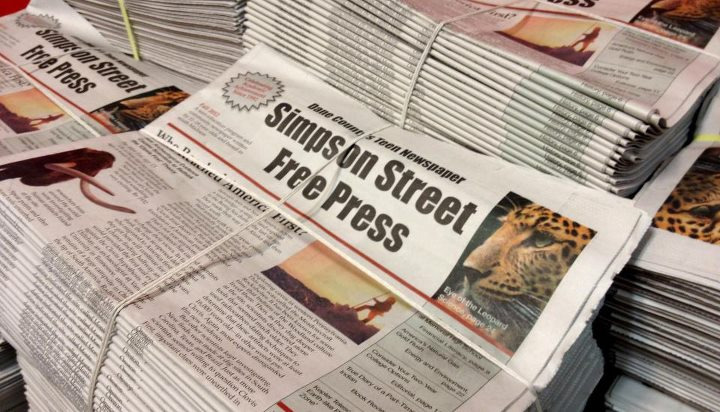|
|
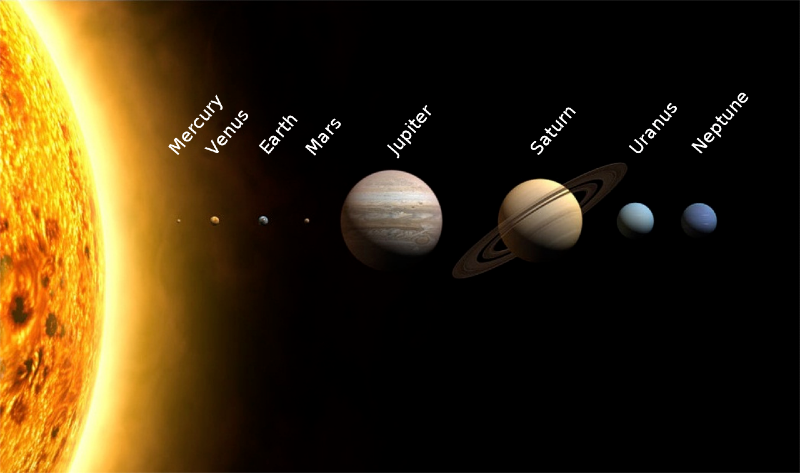
by Penelope Lawson, age 8
Have you ever thought about how amazing our universe is? Or how old it is and what lives there?
The sun is at the center of our solar system, and it has eight major planets. The eight planets orbit the sun in an elliptical path. Four of those planets are smaller ones: Earth, Mercury, Venus, and Mars. If you go past Mars, there are a lot of rocks floating in our solar system. These rocks are leftovers from the formation of the planets, which happened about 4.5 billion years ago.
The four giant planets are Jupiter, Saturn, Uranus, and Neptune. These planets are bigger than Earth, but they are also very light. We have giant planets and small plants in our solar system, but we also have what scientists call dwarf planets. One of the dwarf planets that is very well known is Pluto. A dwarf planet is too small to be considered a planet.
[read more]
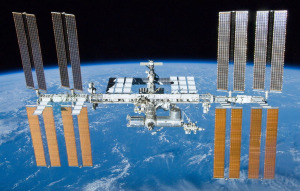
by Elim Eyobed, age 9
Did you know that a space station is similar to a house? It has showers, kitchens, and living areas. But it also has a control center where astronauts , or cosmonauts as they’re known in Russia, can work.
The International Space Station (ISS) is the largest space station that took a team effort to build. Sixteen countries contributed to the effort. Specifically, it took the cooperation of the U.S., Russia, Japan, Canada, Brazil, and 11 European countries. The station was built on Earth and sent piece by piece into space and put together by the shuttle’s robot arms.
After a long period of training, the first three astronauts arrived on the station in November 2000 and lived there for four months. Astronauts, supplies and equipment were taken up to the ISS station by a U.S. shuttle.
[read more]
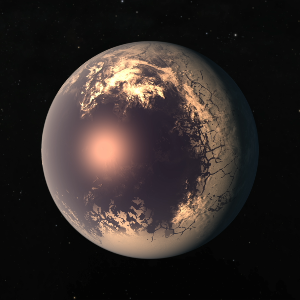
by Mariama Bah, age 13
When looking for life on other planets, we tend to look at exoplanets, which are planets that are orbiting a star outside of the solar system. But, there is a new theory for a new type of planet called “eyeball planets.”
Eyeball planets are “tidally locked.” Tidally locked planets always show the same side to their star. This leaves the side facing the star scorched, and the side facing away frigid. The theory states that between the two sides is a ‘ring of life’. The ring of life is a strip of land on the planet where there is vegetation and water flowing. The conditions on the eyeball planet are extreme, except for the ring of life, which has the potential to actually support life.
Theoretically, there are two types of eyeball planets: “hot eyeball” planets and “icy eyeball” planets. Hot eyeball planets are closer to their stars, so the side facing the star is really hot, while the side facing away from the star is very cold. Hot eyeball planets are the only planets with the ring of life. Icy eyeball planets are also tidally locked, but are farther away from their star, so heat is in short supply. The side facing away from the star, in this case, is covered in thick ice. The side facing towards the star isn’t desert, but instead, has a huge pond of liquid water, which leaves potential for underwater life. If there was surface life, those organisms would have to depend on the pond of liquid water to survive. However, the surface life could be in danger, because if the pond were to freeze over, it would never melt.
[read more]
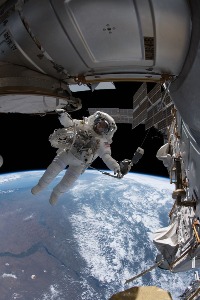
by Sofia Zapata, age 10
Did you know that spacesuits protect astronauts from the dangers of space?
Space is a dangerous place for astronauts. It has rocks and dust that can damage the spacesuit and the spacecraft. Space dust can move faster than a bullet. The temperature in space can be very different. When astronauts are in view of the sun, they feel very hot and when they are in the shade, they feel very cold. There is also a lot of radiation that can hurt the astronauts. But don’t worry, astronauts have spacesuits to help protect them. The spacesuit is big and well insulated against speeding dust and harmful radiation.
Astronauts take everything to space with them. They bring food because there is nothing to eat in space. They also bring water to drink. Some foods they bring are dried noodles because it is not heavy. The suits hold air that astronauts breathe.
[read more]
The Lunar Rover is a vehicle which was designed to help the astronauts from the Apollo Space program explore the Moon. It has no oxygen so the astronauts could only travel a half mile from their spacecraft.
[read more...]
Have you ever thought about how amazing our universe is? Or how old it is and what lives there?
[read more...]
Our solar system is made of nine planets. The sun uses its gravity to keep the planets circling around it.
[read more...]
A group of 250 Madison scientists from the Sierra Nevada Corporation (SNC) are working with NASA to develop systems that provide an optimal environment for growing produce in space.
[read more...]
Did you know that a space station is similar to a house? It has showers, kitchens, and living areas. But it also has a control center where astronauts , or cosmonauts as they’re known in Russia, can work.
[read more...]
When looking for life on other planets, we tend to look at exoplanets, which are planets that are orbiting a star outside of the solar system. But, there is a new theory for a new type of planet called “eyeball planets.”
[read more...]
Stars don’t always shine. At one point, they run out of gas to make energy and die. This can cause unique events like a red giant, supernova, and even a black hole.
[read more...]
Did you know that spacesuits protect astronauts from the dangers of space?
[read more...]
Do you know what ingredients make a star? At first, the star starts off as dust. Then hydrogen is burned into helium which also makes balloons float, in a process called nuclear fusion. That is how a star is born.
[read more...]
When you hear about an asteroid hitting Earth, you probably think about Hollywood movies. But have you ever thought of what would happen if an asteroid actually struck Earth? The chances are slim, but it is possible. And if it did happen, the human race as we know it would be obliterated.
[read more...]
”Fascinating,” says planetary scientist Doug Hemingway of the University of California, Berkeley. “This is a great reminder that when you build up the capability to study one thing, you never know what else you might discover along the way.”
[read more...]
Have you ever given thought to the idea of humans going to Mars? We can send humans today, but astronomers say it’s not a good idea. That's because astronauts would spend too much time traveling to Mars.
[read more...]
It takes eight years to get to Miranda, the 11th moon of Uranus’s 27 moons. The weather on Miranda is about -355 degrees Fahrenheit. It has huge canyons, craters, and a rough surface. Due to this, scientists refer to it as Frankenstein's Monste
[read more...]
Saturn, or the “ringed planet” as space scientists have nicknamed it, is the sixth planet from the Sun in the solar system. It is also the second largest planet out of the eight planets.
[read more...]
Galileo Galilei was known for his discoveries and experiments in mathematics, force, and motion. Those experiments helped Galilei discover that the Earth moved around the Sun and not the other way around.
[read more...]
The universe is made up of galaxies; the one we live in is the Milky Way. Have you ever wondered where galaxies came from or how they were formed? Most galaxies have a long and amazing histories.
[read more...]
June 20, 1969 was a memorable day for all humans as the U.S. Apollo 11 mission achieved what many thought was impossible and landed on the Moon. What was most remarkable about this achievement was not the 239,000 mile distance between the Earth and the Moon that Apollo traveled but instead what the Apollo astronauts found once they arrived on the Moon.
[read more...]
For years, scientists have researched what lies within our solar system. Some objects they have studied are dwarf planets.
[read more...]
Our solar system has eight planets that gracefully orbit the Sun. All of these planets have unique features
[read more...]
There are four small planets in our solar system: Mercury, Venus, Earth and Mars. While these planets are each littler than the rest, they also have distinct and unique traits.
[read more...]
Black holes are very dangerous. They use the force of gravity to suck particles away from stars. Many black holes are thought to exist in the middle of galaxies, where they may contain as much matter as millions of stars.
[read more...]
Nothing can live without the sun. The sun makes energy that gives off heat and light. If we didn’t have the sun the earth would be cold and dark, and no life would exist on the planet.
[read more...]
All the planets got their names from Roman gods and goddesses, except for Earth.
[read more...]
Have you ever heard of the Venus sky show? It is also called the Transit of Venus, or sky eclipse. It occurs when Venus is visible as a black dot while crossing the sun.
[read more...]
Sally Ride dreamed of becoming an astronaut since she was 12 years old. She studied hard in college to learn more about physics, and after she finished graduate school, she was accepted into NASA’s astronaut training program. In 1983, her dream came true when she took off in the Challenger as the first American female in space.
[read more...]
At 8:56 a.m. on May 16, NASA’s Endeavour began its trek to the International Space Station (ISS) from the Kennedy Space Center. The launch was delayed for more than two weeks because of electrical issues. But after two weeks, they finally had the rocket repaired. The countdown was starting: 10, 9, 8, 7, 6, 5, 4, 3, 2, 1, BOOM! They were off to space.
[read more...]
Two rovers, or robots, named Spirit and Opportunity were sent by NASA to Mars seven years ago. Both rovers were designed to discover the secrets of Mars and to see if there is life on the planet.
[read more...]
|
|
